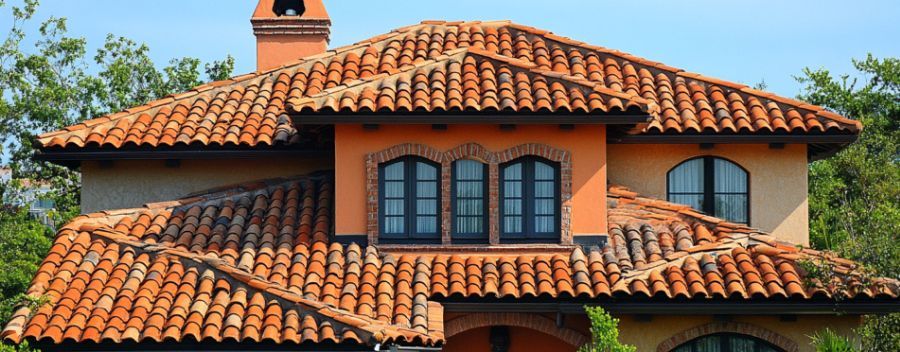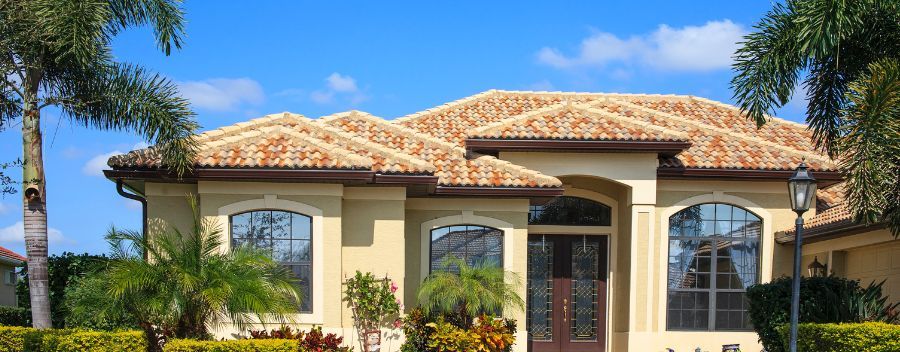What Is the Average Cost of Roof Installation in Iona, FL?
A new roof installation in Iona, FL ranges between $4,000 and $14,000, depending on the size, slope, and material selected. High-end projects can exceed $47,000, especially for larger homes or premium finishes. If you’re building a new property or replacing an aging roof, understanding this range helps set expectations and budget accordingly.
Why Roof Installation Costs Vary in Iona
Roof installation is not a flat-rate project. The final figure depends on a mix of location-specific conditions, construction variables, and homeowner preferences. Here’s how those factors come together.
Size and Pitch of the Roof
The bigger your roof, the more materials and labor it will take to complete. A small single-story home might stay around the lower end of the range. A larger two-story house with more complex ridges and valleys will move the cost upward.
A steep roof increases risk and effort. Installers may need safety harnesses or scaffolding, which slows the process and raises labor hours. For homes in Iona that border on coastal exposure zones, codes may also call for additional underlayments or anchoring systems.
Roof Shape and Architectural Features
Simple gable roofs are less expensive to install than complex designs with dormers, hips, or intersecting angles. Homes that include skylights, solar tubes, or chimney penetrations will also take longer to seal and flash properly, increasing time and cost.
Every angle, edge, or vent opening adds intricacy to the job. Even minor architectural flourishes can turn a basic installation into a more labor-intensive task.
Material Selection and Durability
Your choice of roofing material impacts both short-term and long-term costs. Here’s how some of the most common options compare:
| Material | Estimated Cost (Per Square Foot Installed) | Durability |
| Asphalt Shingles | $5 – $8 | 20–30 years |
| Metal Roofing | $7 – $11 | 40–70 years |
| Concrete or Clay Tile | $10 – $20 | 50+ years |
| Wood Shake/Shingle | $10 – $12 | 20–35 years with upkeep |
| Solar Shingles | $25+ | 25–30 years + energy value |
Some materials require additional support structures. For instance, tile roofs may need framing reinforcements due to weight. That adds to both labor time and materials.
Roof Removal or Overlay?
If you’re replacing an existing roof, you’ll need to determine whether the old roofing can be left in place or must be removed. Removal is more common with roofs that already have multiple layers or visible damage.
Tear-off adds to both labor and disposal costs, but may be necessary to meet local code or ensure the new roof performs as expected. In some cases, local ordinances in Florida require full removal before installation due to hurricane-zone compliance.
Permits and Local Regulations
In Iona and across Lee County, permits are a mandatory part of roof installation. Most projects require documented approval for structural integrity, materials used, and adherence to local wind resistance standards.
Permits typically cost between $50 and $200, depending on the size and scope of the project. Your roofing contractor should handle this paperwork on your behalf and include the cost in your proposal.
The True Cost of Cutting Corners
A lower bid might seem tempting, but roofing is a job where shortcuts can be costly. Poor flashing, improper installation of underlayment, or incorrect nail patterns may not show immediate issues. But in Florida’s wet and windy conditions, failures become obvious fast.
Common results of low-quality installation include:
- Leaks and moisture intrusion within the first year
- Mold in attic insulation
- Lifted or cracked shingles during the first storm season
- Insurance complications if the work wasn’t up to code
Hiring a licensed, insured roofer with a strong local track record prevents these costly re-dos.
Long-Term Value of a High-Quality Roof
Roof installation is more than a construction task; it’s a long-term financial decision. A well-installed, energy-efficient roof does more than just cover your home. It actively saves money, reduces maintenance, and adds resale value.
Benefits of investing in a quality installation include:
- Energy Efficiency: Reflective roofing and proper insulation reduce cooling costs
- Storm Protection: Reinforced materials resist wind uplift and impact
- Insurance Discounts: Many insurers offer premium reductions for wind-rated roofs
- Curb Appeal: A visually appealing roof increases buyer interest and market value
- Warranty Coverage: Reputable contractors offer workmanship guarantees and material warranties, giving peace of mind for decades
What to Expect During a Roof Installation in Iona
From first quote to final inspection, here’s how the process flows when you work with a licensed local team.
Step 1: On-Site Assessment
A roofing technician visits the property, takes measurements, inspects current conditions, and discusses goals. You’ll get material recommendations, timeline estimates, and cost breakdowns.
Step 2: Permit Filing
Once the scope of work is approved, the contractor handles local permitting. This includes submitting documents to Lee County and scheduling any required pre-installation checks.
Step 3: Tear-Off or Preparation
If necessary, the old roofing is removed, and any underlying damage is addressed. For overlays, the surface is cleaned and prepped for new material.
Step 4: Installation
Shingles, tiles, or panels are installed according to the manufacturer’s specifications. Flashing, sealants, vents, and underlayment are secured based on local wind and moisture conditions.
Step 5: Final Walkthrough and Cleanup
Once installation is complete, the contractor inspects all areas, confirms satisfaction, and ensures the job site is free of debris or nails. A final report is issued along with any applicable warranties.
Schedule a free roof inspection in Iona, FL, and let Boss Roofing Experts help you plan confidently.
The Final Verdict on Roof Installation in Iona, FL
The cost of roof installation in Iona ranges from $4,000 to $14,000, with large or high-end projects climbing to $47,000 or more. The total depends on the size and shape of your home, the roofing material chosen, labor costs, and whether a tear-off is required.
While this is a major investment, it delivers lasting returns. A well-installed roof adds resilience, efficiency, and beauty to your home, critical in Florida’s climate. Working with a local team familiar with regional codes ensures you get not just the right roof but also the right protection.
Boss Roofing Experts brings trusted craftsmanship and clear communication to every roof project in Iona and surrounding areas. Whether you’re upgrading, replacing, or building new, our team provides reliable timelines, honest pricing, and unmatched attention to detail.
Frequently Asked Questions About Roof Installation
Can I Live in My Home During Roof Installation?
Yes. In most cases, roof installation does not require you to vacate the property. You may hear some noise and foot traffic during the day, but professional crews ensure safe access and cleanup each evening.









